Retail Executives Speak Out
Commercial Property Executive invited five respected business leaders—representing retail owners, investors and developers—to discuss best practices and to share their companies’ strategies, as well as what they feel is the next big thing in the retail sector.
By Robyn A. Friedman
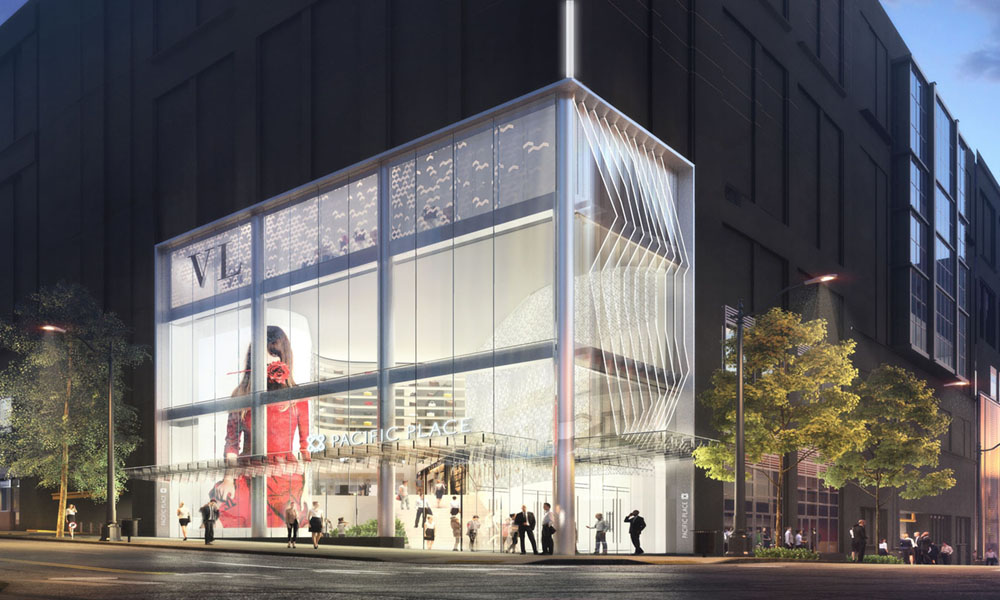
Starting in the fourth quarter of 2017, Madison Marquette plans to redevelop Pacific Place, a 339,000-square-foot retail center at Sixth Avenue and Pine Street in downtown Seattle. Gensler is the architect for the project, which is scheduled for completion in 2018.
What’s happening in the rapidly evolving retail real estate sector? Are bricks-and-mortar retailers adopting strategies that allow them to survive in an e-commerce world? What about clicks-to-bricks retailers—who’s following Amazon’s lead in establishing physical locations for their online stores? Commercial Property Executive invited five respected business leaders—representing retail owners, investors and developers—to discuss best practices and to share their companies’ strategies, as well as what they feel is the next big thing in the retail sector.
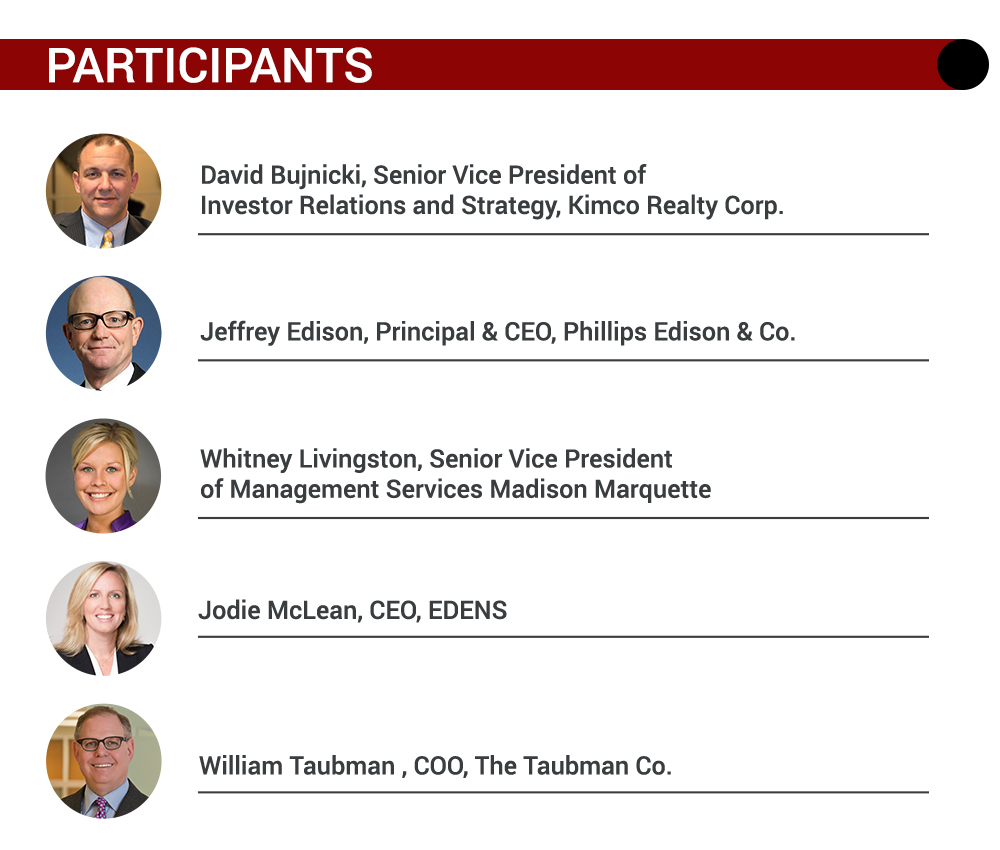
Q. What are your company’s top priorities for the next 12 to 18 months?
BUJNICKI: Leasing up our space and getting our occupancy levels up. We’re expecting to increase our occupancy over the course of 2017 and we have a large redevelopment pipeline that we’re looking to effectuate.
EDISON: From an operating standpoint, we are focused at the property level to increase the occupancy of our centers and continue to improve the merchandising mix of every center we own. On the acquisition side, we were one of the largest buyers of grocery-anchored shopping centers in the country for the last three years. We anticipate that continuing and being a priority for us.
LIVINGSTON: Executing on our current portfolio. We have some very exciting projects in our current portfolio and believe strongly that executing on what we have both in our own and advisory portfolios is priority No. 1.
McLEAN: Continuing the repositioning of our assets. Retail is a direct reflection of society and community trends, and our role is always to be the place of ever-increasing foot traffic and dwell time. With our customers and communities changing so quickly in their needs, wants and desires, our absolute priority is staying ahead of that at the asset level.
TAUBMAN: Top priorities are to continue to invigorate, or reinvigorate, the merchandising of the malls by bringing in new and creative tenants.
Q. What is the scope of your new development and redevelopment pipeline? Can you give us an example of a noteworthy project that’s underway or on the drawing board?
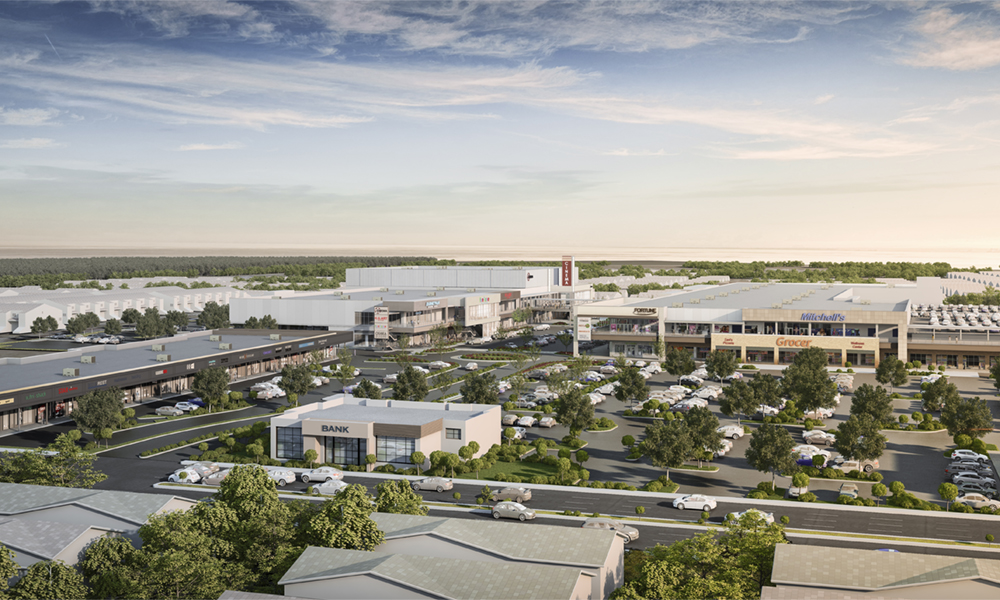
Kimco’s Hylan Plaza in Staten Island, N.Y., is being redeveloped and will be renamed “The Boulevard.” It will include a mix of national tenants, including the area’s top grocery, entertainment, food and fashion retailers.
BUJNICKI: This year, we have about $250 million of spending for redevelopment projects. Our total redevelopment pipeline is $800 million over the next several years. Our ground-up development pipeline totals $500 million, of which about $150 million will be spent in 2017.
We are doing a redevelopment of Hylan Plaza on Staten Island in New York. We’re recapturing an expiring Kmart box over there. We’re rebranding the property to call it The Boulevard. We’re going to demo about 90 percent of the existing property. The project will total over 367,000 square feet.
EDISON: We tend to have under redevelopment between 10 and 15 percent of our portfolio at all times, so that is 35 to 50 shopping centers that we are in the process of working on redevelopment.
LIVINGSTON: We’re doing more redevelopment today than ever. What we’re seeing in 2017 is that it’s less about adding new GLA and more about refining our existing GLA, whether that is through redevelopment, remerchandising, repositioning, etc.
Pacific Place is in downtown Seattle. It’s a more traditional enclosed mall, and we’re looking to elevate the placemaking, which will help us transform the merchandising to accommodate major changes in the market. We will have emerging brands, clicks-to-bricks retailers and elevate the food and beverage offerings at the project.
McLEAN: Our current pipeline is about $570 million. That includes new development and redevelopment. We’re repositioning Preston Royal in Dallas—taking a really exciting asset that’s well embedded in the community and focusing on the merchandise mix to make sure it’s reflective of what the community wants and needs today.
TAUBMAN: We have two big projects that have been announced. One is the re-imagination and renovation of Beverly Center in Los Angeles, and the other is the expansion and renovation of The Mall at Green Hills in Nashville. One is a $500 million project, and the other, $200 million, so these are substantial capital commitments by the company. We are involved in upgrading the existing infrastructure of the centers that we own. We do not have any other new development expected to start construction in the near term.
Buy, Sell or Hold
Q. Is it more likely that you will be a net buyer or net seller of assets during the next year?
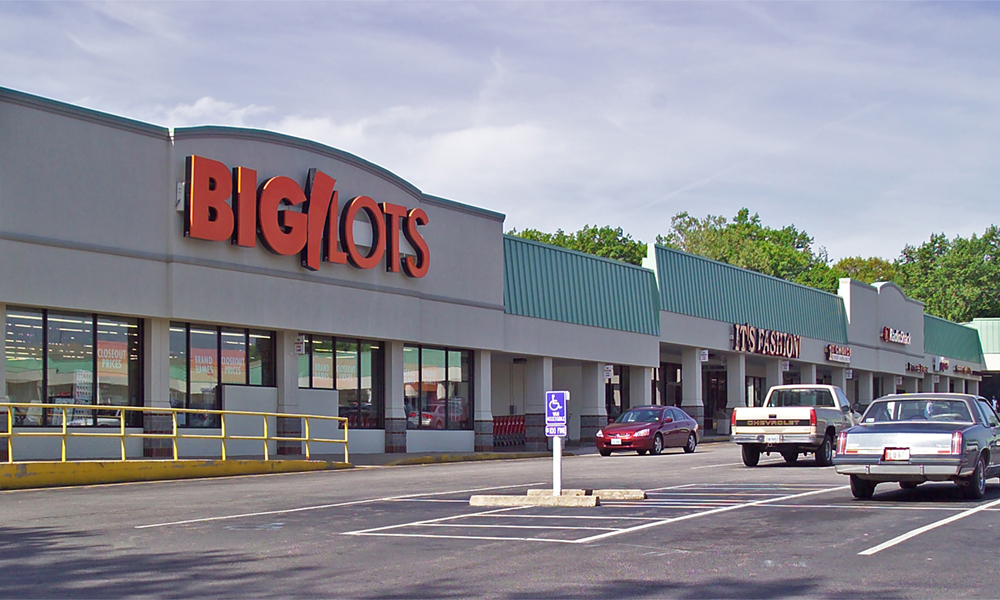
Phillips Edison has completed renovations of its Nordan Shopping Center in Danville, Va. The firm brought in a new Walmart and repositioned the property.
BUJNICKI: This year, we’re projected to be a modest net buyer. Our guidance expects us to buy anywhere from $300 million to $400 million worth of new properties in 2017, while selling between $250 million and $350 million of existing properties.
EDISON: It’s highly likely we’ll be a net buyer. We have a significant amount of capital that we’d like to have in the grocery-anchored shopping center business, and we continue to find opportunities where we can put that money to work and create not only good initial returns but great, strong long-term returns.
LIVINGSTON: Madison Marquette anticipates being more of a net buyer in 2017, but market conditions and investment or sale opportunities will ultimately dictate this.
McLEAN: We are always in the market to continuously invest in new assets as long as they are well located and well positioned and we believe we can continue to drive value.
TAUBMAN: We’re not a big buyer or seller. We’re not an acquisition machine, unlike some of our competitors. We’ve not built by acquisition. We have bought and sold over the years, but we have no immediate plans for buying or selling.
Q. How do you feel the retail sector will perform this year compared to 2016?
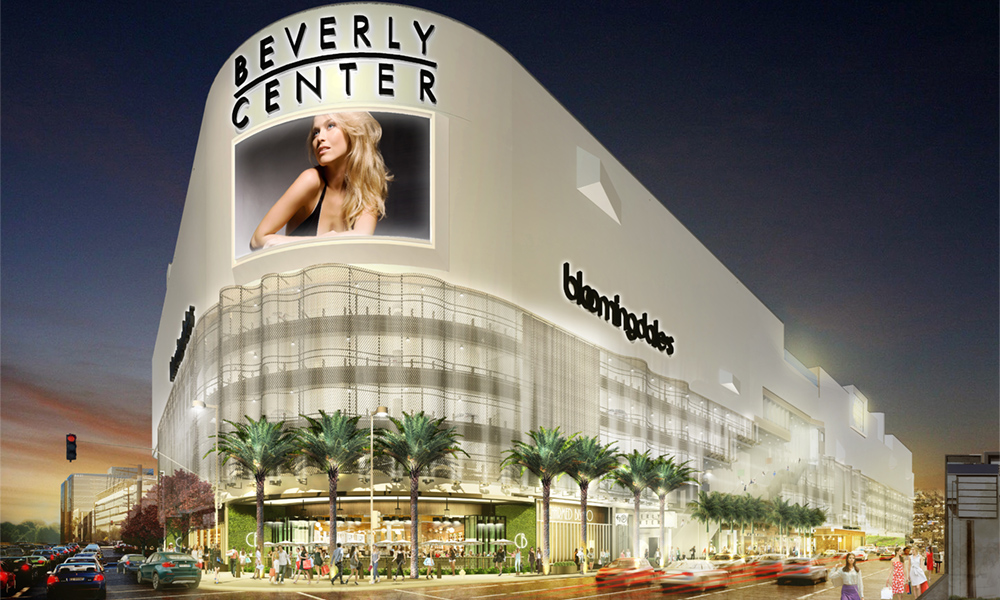
Taubman’s Beverly Center in Los Angeles is undergoing a $500 million renovation that will include 10 chef-driven, unique-to-market eateries; a new streetscape; technology-driven parking; and interior, river-like skylights.
BUJNICKI: I think we’re going to have a continuation of last year, which was very good. We don’t see any slowdown in fundamentals regardless of what you see in the mainstream news, where there’s a real negative sentiment happening across retail. Our occupancy levels remain near an all-time high. Our leasing spreads have been strong, and we continue to believe we are going to have positive same-site NOI somewhere in the 2 to 3 percent range, which is all very good. There’s no question that there are a few tenants that are troubled, but we have very limited exposure to them.
EDISON: We continue to see double-digit rent increases for our tenants. We continue to see occupancy improving. On the other hand, the grocery business right now is highly competitive because we’re seeing deflationary food prices, which is causing same-center sales at the traditional grocers to be tough to meet.
LIVINGSTON: I’m cautiously optimistic about 2017. A number of retailers are closing stores, and the number of retailers expanding has reduced over the last five years, but I think both tenants and developers are getting smarter. Tenants are using omnichannel retailing, big data analytics and enhanced store planning, and that should maximize their bottom line. Similarly, developers and shopping center operators are doing the same. That is something we haven’t seen in the past and is very positive.
Q. Given the much-publicized downsizing by national and regional retailers, to what extent does that pose a challenge for retail real estate?
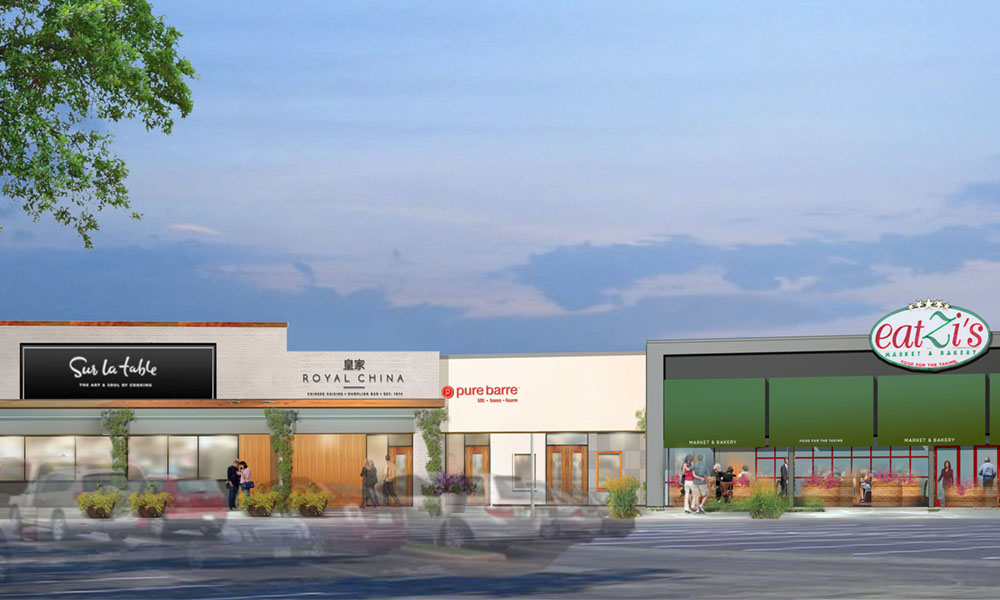
Edens is redeveloping Preston Royal in Dallas. Anchored by Tom Thumb and Barnes & Noble, the center will add Sur La Table, Eatzi’s and Paper Source to its tenant roster.
BUJNICKI: Most of the tenants that are having financial or operational difficulties are not new to us. We’ve been watching them for many years, so we’ve been taking proactive steps to stay within our exposure. We have a real good spread of risk over a wide diversity of tenants.
LIVINGSTON: We’re certainly going to have a significant amount of vacant GLA as a result. That said, I think there is an opportunity for developers to redefine what we can offer to both tenants and customers. If you have a vacant Sears box, how can you carve it up to have a collection of restaurants or add small shop space? Retailers are refining their footprints and space layouts—they’re getting smaller, not bigger. So if you can add smaller shop space that is attractive to clicks-to-brick retailers, emerging brands, or regional and national tenants, that’s a positive.
McLEAN: Over the last 25-plus years that I’ve been doing this, the repositioning of retail has been one of the consistencies, whether it’s expansion or contraction of size. I think this gives us an opportunity to make sure we’re bringing the best merchandising in.
TAUBMAN: It’s all part of the job. You’ve got to continually move toward the new tenants that are the ones who are dynamic and moving forward as opposed to trying to move out the names that are not quite as dynamic historically.
Q. Are you incorporating special experiences or entertainment into your properties?
LIVINGSTON: Absolutely. It’s not an option anymore.
McLEAN: We find that routine events that the consumer can count on are really effective, whether those are farmers’ markets, Friday night outdoor movies, outdoor yoga—things like that work really well on consistent schedules. We try to design all of our places to spark engagement.
TAUBMAN: We have added experiences in the right circumstances. At Great Lakes Crossing, we added LEGOLAND and SEA LIFE Michigan Aquarium, and we’re adding Round 1, which is a bowling concept. We continue to look at adding different entertainment concepts, but it has to be appropriate for each market and each shopping center.
Q. Which retail categories do you find are experiencing the most significant challenges, and which are thriving?
BUJNICKI: Everybody is familiar with the department stores and what they’re going through. The good news is that most open-air shopping center owners like Kimco have very few, if any. Commodity-based retailers that don’t have a good omnichannel platform—such as books, office supply and electronics retailers—are challenged. Off-price retailers like Ross and Burlington stores are thriving. Specialty grocers, health and wellness and beauty salons continue to do very well, as do fast casual restaurants.
LIVINGSTON: Department stores are at the top of the list of those that are most challenged today. On the flip side, clicks-to-bricks retailers like Bonobos and Warby Parker are expanding.
McLEAN: Health, wellness and beauty do well. Home retailers generally do well. Retailers who can’t distinguish themselves at the service level inside their store will be challenged because the consumer has so many opportunities and can become knowledgeable on their own before entering the store.
TAUBMAN: Apparel is facing challenges—women’s apparel, specifically. Food, cosmetics and home continue to show growth.
Q. Have you adopted any innovative technology, or are you about to?
EDISON: We are actively involved in a big data/artificial intelligence program that allows us to make better-informed leasing, asset management and acquisition decisions. Our new National Accounts team tracks emerging trends to support the growth of our merchandise mix. This team identifies innovative ways to attract and retain new merchant relationships and foster existing retailer relationships.
LIVINGSTON: We’re using Beacon technology. We used projection mapping at Pacific Place over the holidays to illuminate the exterior of a building with a choreographed holiday show. It created buzz about the project and drew people in.
McLEAN: Understanding the data of the consumer is really important. We’re using it to understand who is spending time and why they’re spending time at our places.
TAUBMAN: Over the next five years, you’re going to see a lot more technology that is put into brick and mortar that enables the brick-and-mortar locations to communicate more directly with the customer and simplify the shopping trip.
Q. What’s the next big thing in retail real estate?
BUJNICKI: For retail owners, it’s continuing to become smarter about the ways consumers shop, whether it’s using motion counters at shopping centers to see how many people come in or mobile technology that utilizes geospatial information systems. You can take that technology and the big data and then present it to a prospective tenant and show them how it will boost their sales.
EDISON: Big data and AIT will play an increasingly important role in the retail sector by providing our grocers and in-line retailers with valuable insights, helping to make more informed and focused decisions.
LIVINGSTON: I think we will see more entertainment at shopping centers. It’s another reason to drive traffic to a center that is not traditional.
TAUBMAN: If there is any one big thing, I think it is going to be the ability to communicate directly with customers, which brick-and-mortar retail has not historically had the ability to do.







You must be logged in to post a comment.